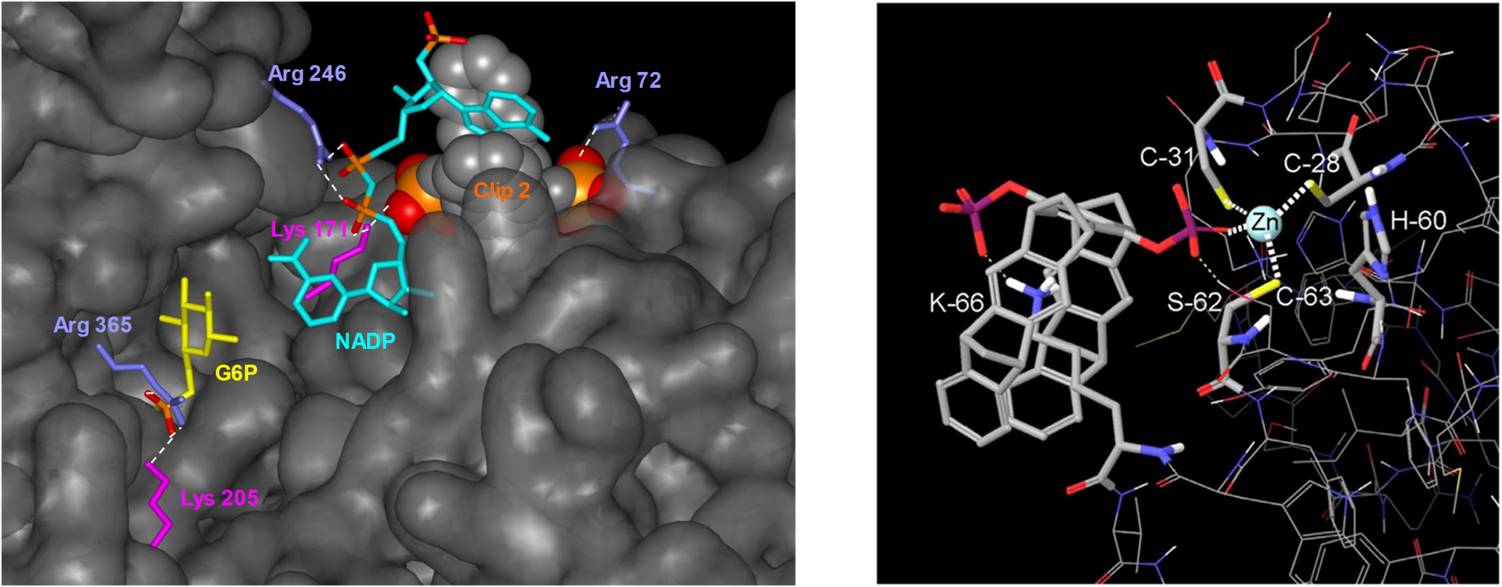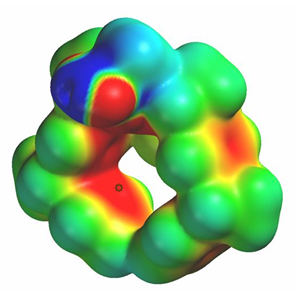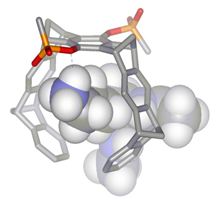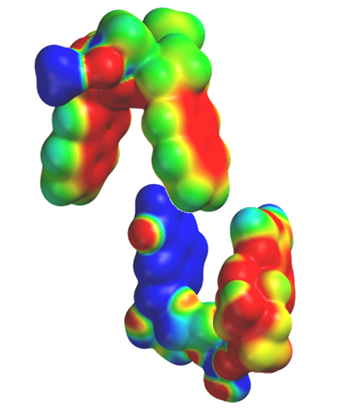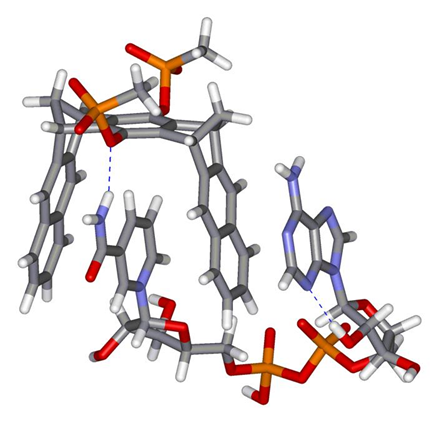Research
Molecular clips and tweezers for enzyme inhibition:
Together with F.-G. Klärner we have developed novel receptor molecules for amino acids and cofactors. These consist of a U-shaped alternating belt of aromatic and norbornadiene building blocks, which form/embrace an electron-rich inner cavity. Planar naphthaline side walls create molecular clips, which draw flat cations into their interior, and thus bind biological cofactors with unprecedented selectivity (NAD+, TPP, SAM, Kd ~ 50 µM). Kinked arene-norbornadiene-arene sidewalls lead to molecular tweezers, which include in their torus-shaped interior the side chains of lysine and arginine (Kd ~ 5 µM). Phosphate or sulfate anions attached to the central hydroquinone ring render the related receptor molecules highly water soluble and complement the dispersive interactions with the included guest by external salt bridges with the bound cation.
These new clips and tweezers introduce new avenues of enzyme inhibition, which have been documented in many examples and were mechanistically studied: Clips deplete the NAD+ level, depopulate the Rossman fold and thus competitively inhibit dehydrogenases, with respect to the cofactor (ADH, G6PD). Tweezers choose the best accessible lysine or arginine residues on a protein surface; consequently they act by way of a noncompetitive mechanism (ADH etc.). They are able to simultaneously establish a strong Phosphate-Zinc2+ bond and thus show superior affinities towards Zinc finger proteins where they displace lesioned DNA double strands (PARP-1).
In close collaboration with biological partners we currently develop second generation molecular tweezers which carry additional binding sites for the immediate environment of strategic lysines on the surfaces of various proteases. We intend to apply these tools to study mechanisms of allosteric regulation, cooperative activation and controlled self-assembly of protein machines. Since the supramolecular ligands recognize the protein surface and not well-defined clefts, they may in principle also open up new therapeutic strategies for diseases.
References
- A Mechanism of Efficient G6PD inhibition by a Molecular Clip. P. Talbiersky, J. Polkowska, F. Bastkowski, M. Kirsch, H. de Groot, F. Klärner, T. Schrader, Angew. Chem. Int. Ed. 2009, 48, 2886-2890.
- Aromatic Interactions by Molecular Tweezers and Clips in Chemical and Biological Systems. F.-G. Klärner, T. Schrader, Special Issue “Aromatic Interactions in Chemistry and Biology”, Acc. Chem. Res. 2013, 46, 967–978.
- Molecular tweezers modulate 14-3-3 protein-protein interactions. D. Bier, R. Rose, K. Bravo-Rodriguez, M. Bartel, J. M. Ramirez-Anguita, S. Dutt, C. Wilch, F.-G. Klärner, E. Sanchez-Garcia, T. Schrader, C. Ottmann, Nat. Chem.2013, 5, 234-239.

